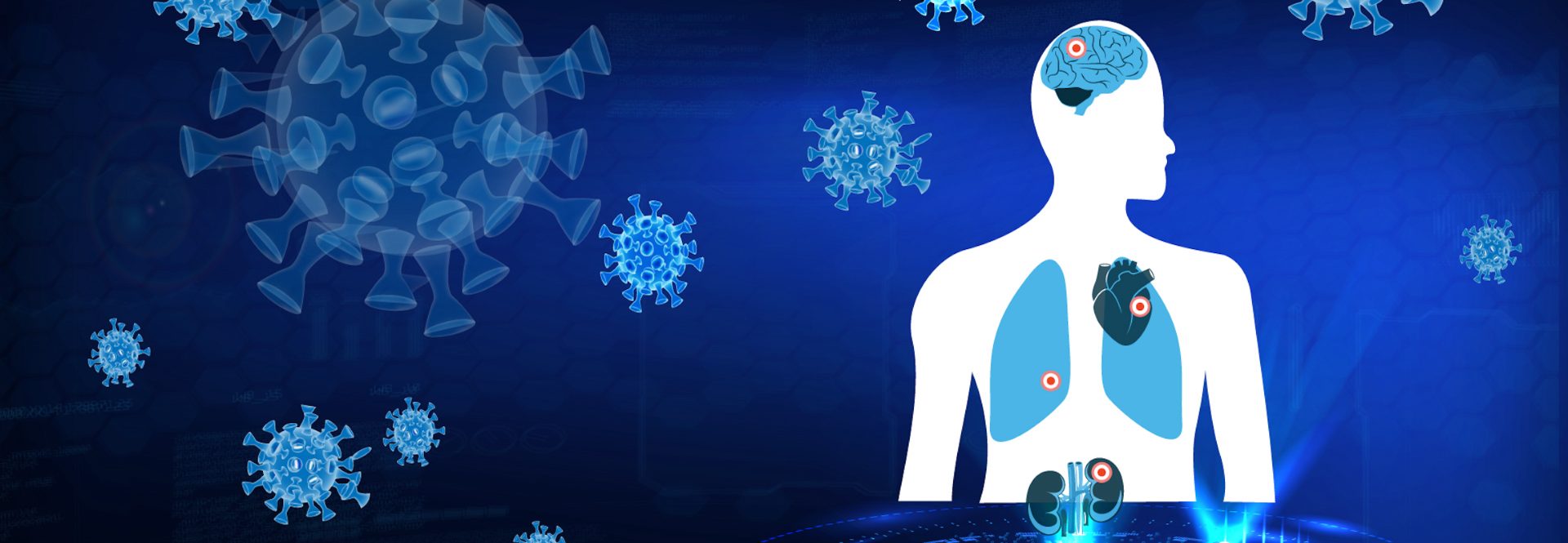

NMR* International COVID-19 Research Network at Work - Part 1
Webinar Overview
In the current worldwide COVID-19 pandemic situation, fast developments not only in vaccines are needed, but also in analytical techniques to detect the infection, predict outcomes during hospitalization and more and more important towards Long COVID.
Successful development of diagnostic routines need large number of samples and spectroscopic data generated thereof as well as comprehensive metadata coverage.
Initiated by Bruker and under the guidance of the Australian National Phenome Center (ANPC) run by Prof. Jeremy Nicholson, a worldwide international COVID Research Network consisting of several institutions* collaborate, using completely standardized NMR procedures producing spectral data, exchangeable and integratable across the Network . In the webinar, prominent members of the Network will present the advantage of exchanging data and their results along with detection, outcome prediction, and Long-COVID risks and monitoring.
Nuclear Magnetic Resonance (NMR) spectroscopy technology is a robust analysis technique that can provide a solution to the challenges of COVID-19 diagnosis and prediction based on metabolic changes caused by the virus once RUO results can be transferred into certified routines. The concept of phenoconversion and phenoreversion has been developed to follow these changes upon infection up to recovery. Applying NMR spectroscopy with its unique reproducibility and transferability enables the development of sensitive and specific routines for COVID analysis. This information is vital to develop diagnostic and predictive actions because NMR can connect metabolic information with systems biology on a personalized basis. Because of these advantages, NMR has the potential for the development of effective health monitoring, allowing early detection and treatment effects.
Additionally, the webinar speakers will discuss the level of complexity COVID-19 presents for emerging technology applications and scientific concepts. The mass scale of the pandemic encouraged international collaborative efforts to meet the challenges posed by the global outbreak of COVID-19. Initial research and development took old knowledge of treatments and techniques and attempted to adapt it in new ways to the current viral situation. This is where the need for powerful tools such as NMR presented itself most obviously.
Wednesday June 09, 2021
Key Topics
- How NMR* helps to experimentally demonstrate that long COVID retains a characteristic metabolic fingerprint
- How NMR* spectroscopy RUO have proven useful to discriminate acute patients from healthy subjects
- How Standard Operating Procedures (SOP’s) guarantee the high spectral quality and reproducibility for the generation of identical spectra, independent of the lab, user, and system
- How strong collaboration among research groups worldwide is ensured because of the strict standardization of the Bruker Avance IVDr platform*
- How NMR* quantify hundreds of metabolites in a mixture in one single acquisition, without separation, turning biofluids into data.
Who Should Attend?
This webinar is of particular interest to Researchers in Covid 19, Heads of Clinical Research, Head of Clinical Chemistry, University Hospital, Medical University, Institute for Clinical and Experimental Medicine, Metabolic centers, Epidemiologists, Medical Doctor researching in Oncology, Diabetes, Infection, Pediatrics, Cardiology, Biobanks
* Bruker NMR Instruments are for research Use Only. Not for Use in Clinical Diagnostic Procedures.
Speaker
Jeremy Nicholson
BSc PhD CChem FRSC CBiol FRSB FRCPath FMedSci HonFRCP
Pro-Vice Chancellor for Health Sciences
An internationally renowned pioneer in metabolic phenotyping and systems medicine, Professor Nicholson is the Pro Vice Chancellor for Health Sciences at Murdoch University and a Clarivate Analytics Highly Cited Researcher who has authored more than 700 peer-reviewed papers on molecular aspects of body systems medicine. A Fellow of the UK Academy of Medical Science, Professor Nicholson comes to WA from Imperial College London where he was the founding director of the MRC-NIHR National Phenome Centre.
Registration
Dr. Oscar Millet
Principal Investigator CIC bioGUNE
Dr. Oscar Millet is the group leader of the Precision Medicine and Metabolism group of the CIC bioGUNE. His research focuses on the use of nuclear magnetic resonance (NMR) in the study of biologically relevant proteins and enzymes, paying special attention to the metabolic information that can be extracted from biological samples such as serum and urine. He has been awarded the Real Sociedad Española de Química prize (2004), the Spanish NMR group prize (2005), and the Innovation Award of the Basque Government (2018). He is the scientific founder of the spin-off Atlas Molecular Pharma and is the president of the Spanish Chemical Biology Group.